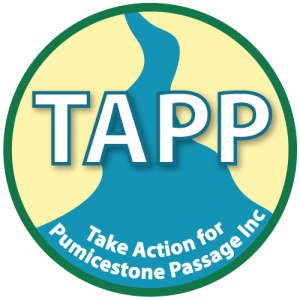3.1 The Pumicestone - a catchment like no other
Host - Graham Webb, Sunshine Coast Council
Mike Ronan
Manager Wetlands Unit
Department Environment and Science (DES)
Mike is Manager for Wetlands, in the Policy and Programs Division of the Queensland Department of Environment and Science. He is responsible for many initiatives that have been used to achieve policy objectives in Queensland including: requirements under Reef 2050 Plan; the Murray Darling Basin Plan; the Lake Eyre Basin Agreement; the Strategy for the Conservation and Management of Queensland’s Wetlands; Queensland requirements under Ramsar and international migratory birds agreements; and the development and management of the WetlandInfo website.
Mike represents the interests of Queensland wetlands on many national and state groups, including the National Wetlands and Aquatic Ecosystem Sub-Committee. He has worked for the Queensland Government for over 20 years in Wetlands, Operations, Marine Parks, Coastal Management and Waste Management. Mike has also worked for the Port of Brisbane and CSIRO as an environmental consultant and has extensive overseas experience in Europe and America. He holds a BSc (hons) in Zoology and an MSc in Marine Biology.
Abstract: A combination of geological, hydrological, biological and human features makes each catchment unique. For such a small catchment, the Pumicestone has a significant range of values, including being part of the internationally important Moreton Bay Ramsar site. We will look at how this catchment sits within the broader context of Australia and Queensland. We will follow how water moves through this landscape and follow its flow from the headwaters in the D’Aguilar range and the Glasshouse mountains, through the floodplains to the Pumicestone passage.
The catchment has been vitally important to first nations people for many generations. Ecological values include extensive mangrove and ‘wallum” ecosystems and many threatened terrestrial and aquatic species. There is a significant agricultural sector and an increasing population, drawn to the many unique features of the area. The area has a well-developed tourist sector with people drawn to the many scenic landscapes such as the iconic glasshouse mountains. We will examine how the unusual combination of landscapes within the catchment provides the opportunities for so many values to co-exist.
Using a partnership approach and a facilitated workshop process we virtually “walked-the-landscape” with local knowledge experts. Using published information and data from the workshop a “catchment story” video was developed which tells the story of the catchment. The process has allowed everyone to be “on-the -same -page” about how the catchment works, a fundamental building block for any catchment management activities.
